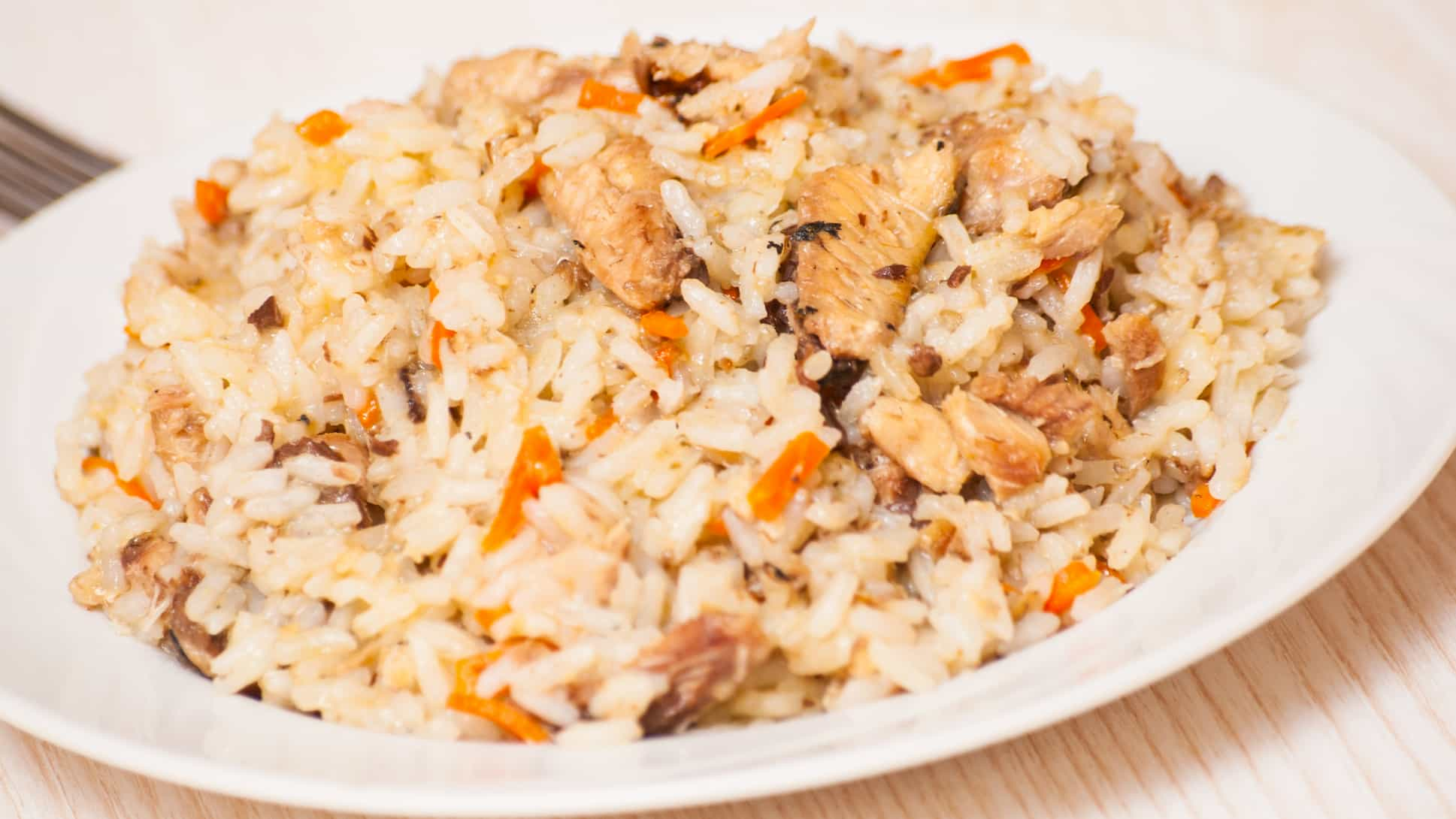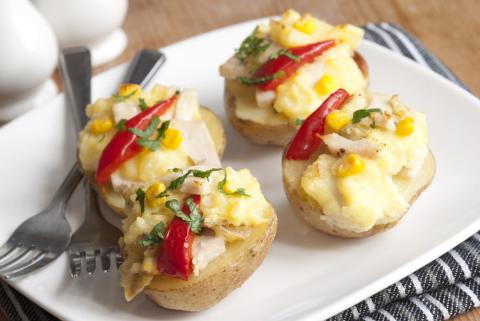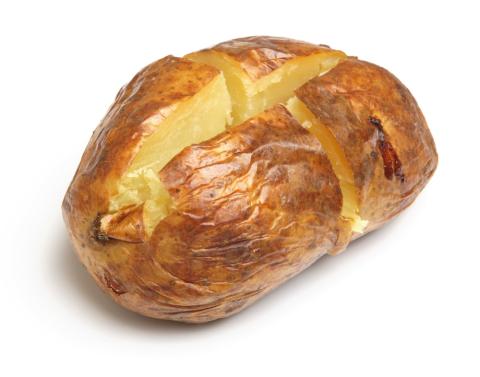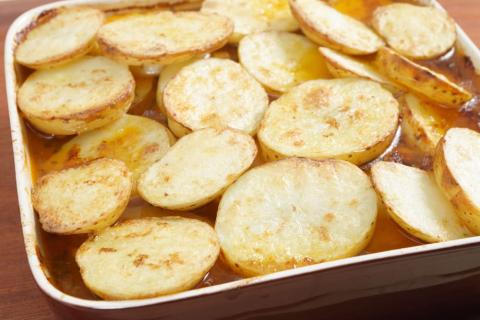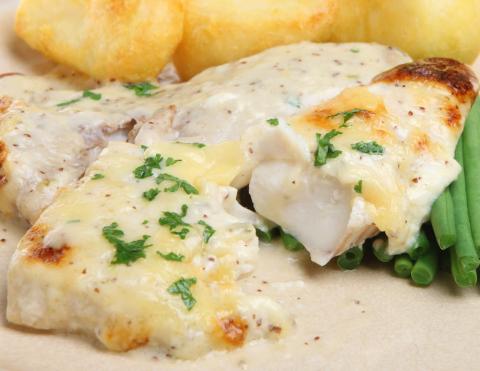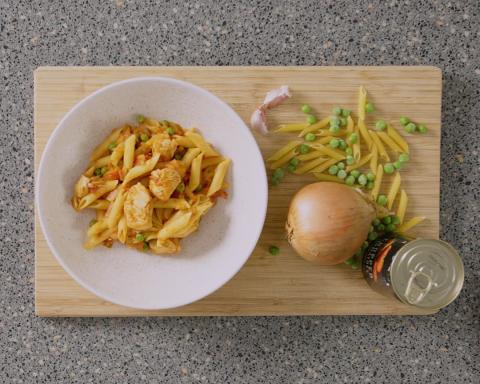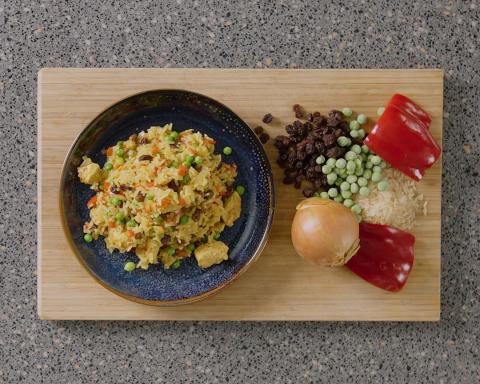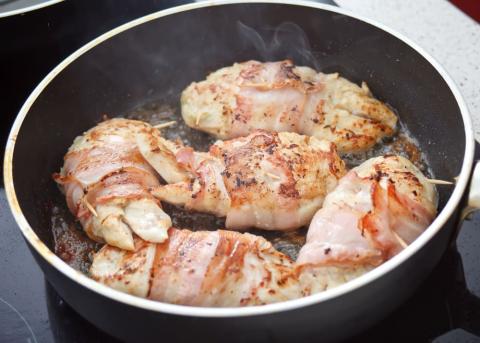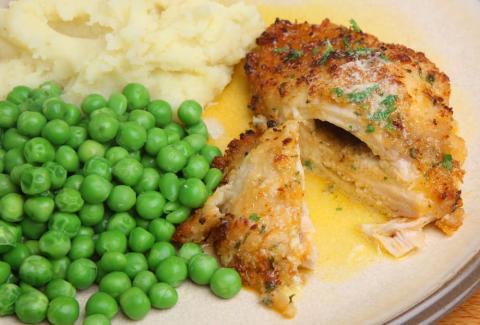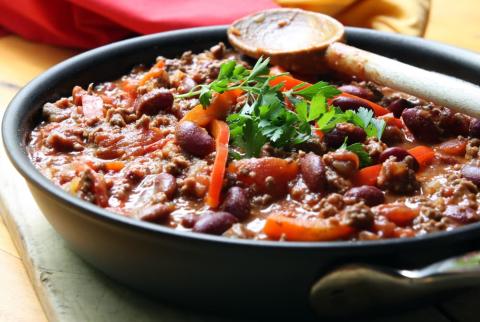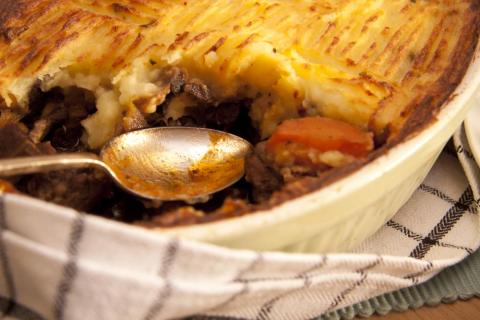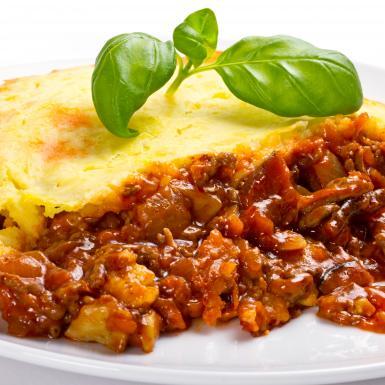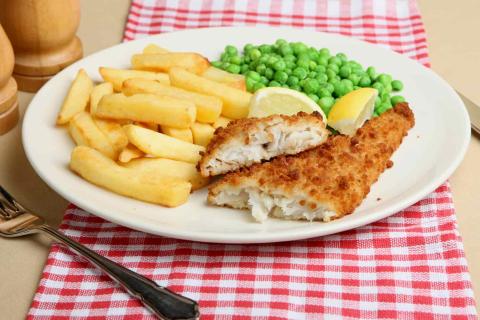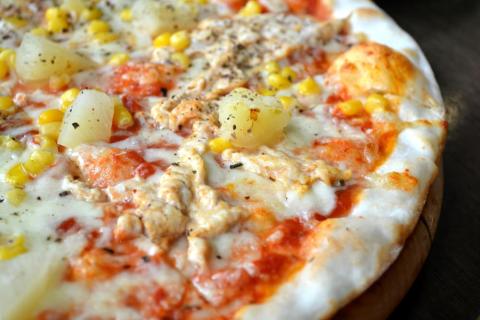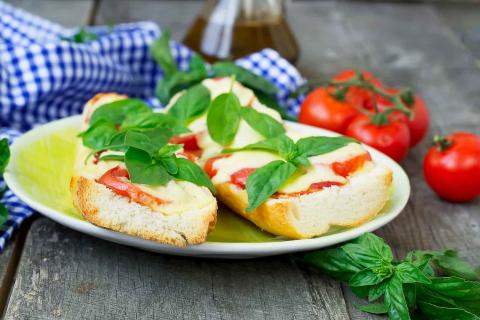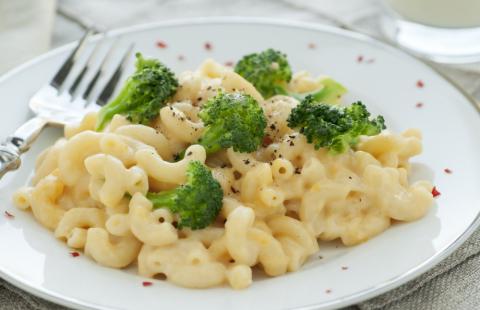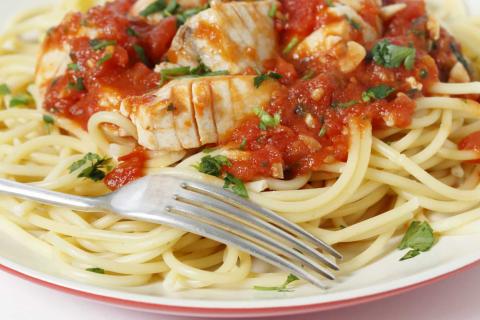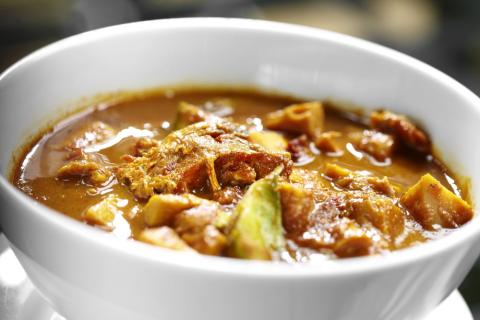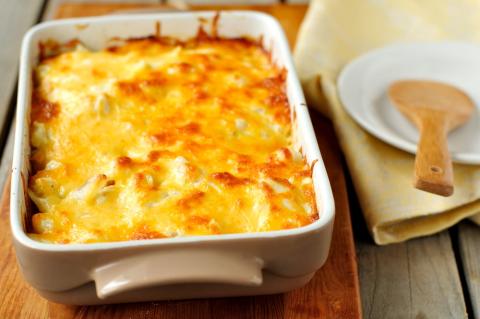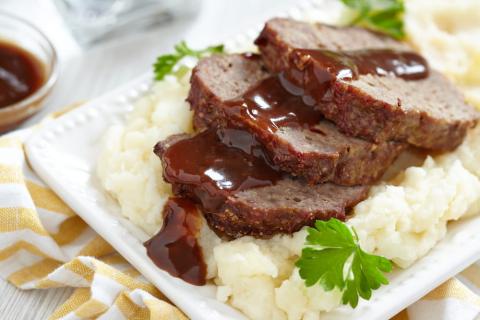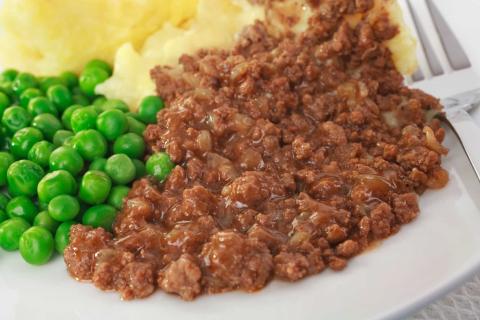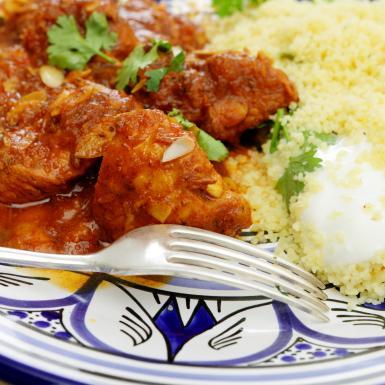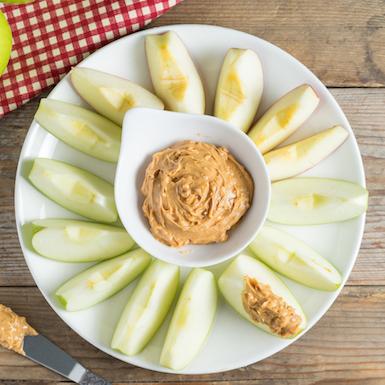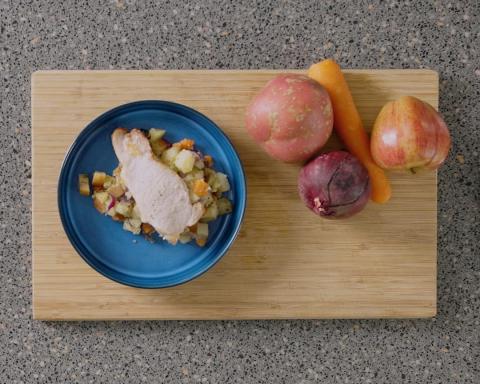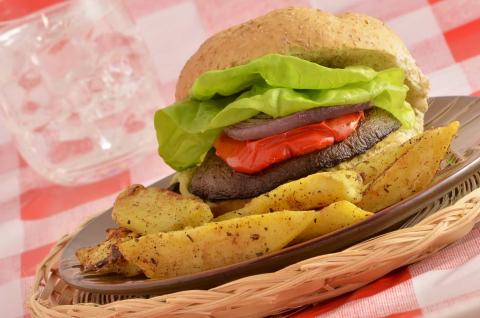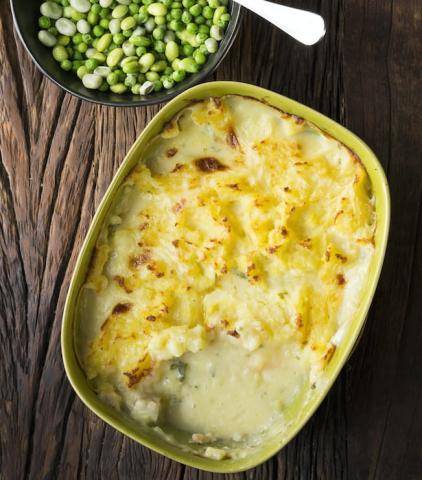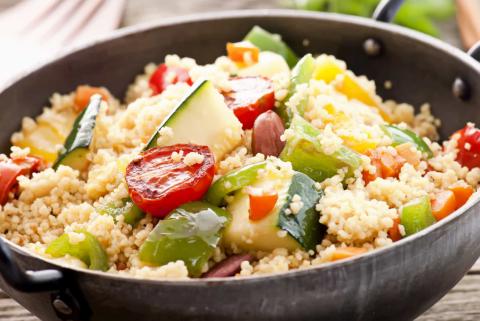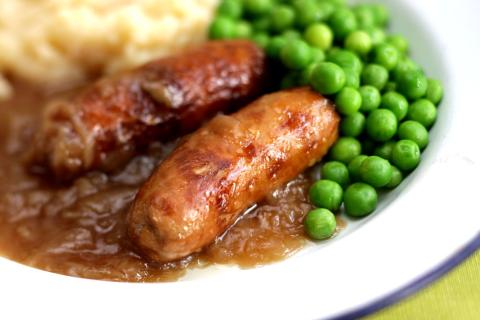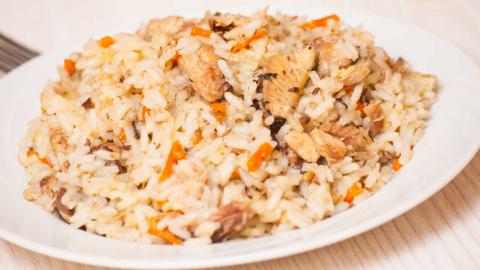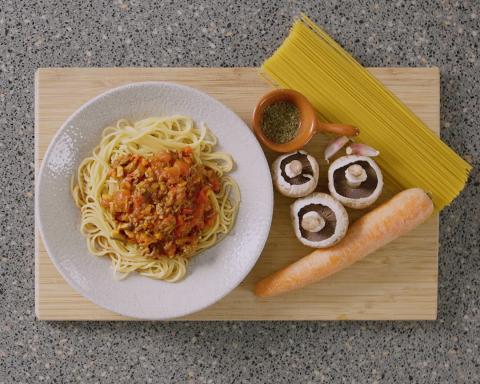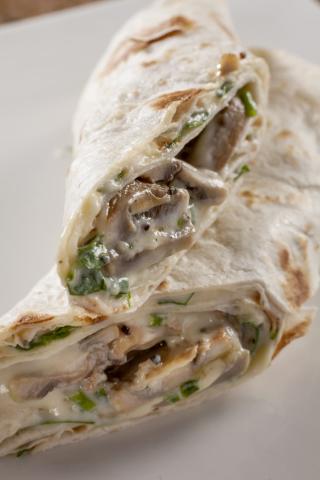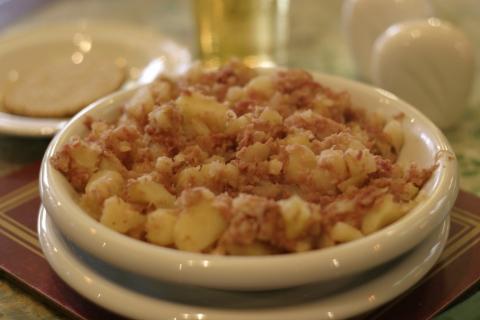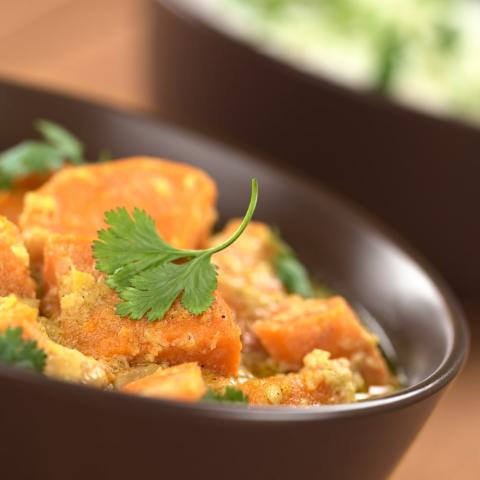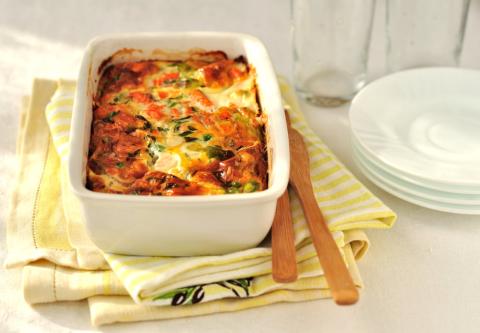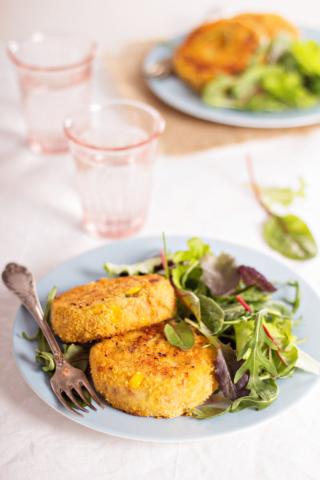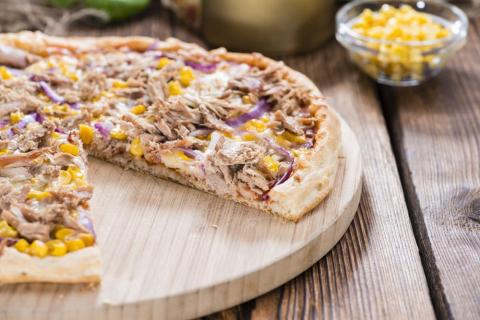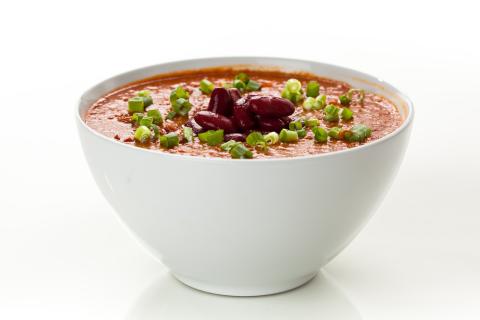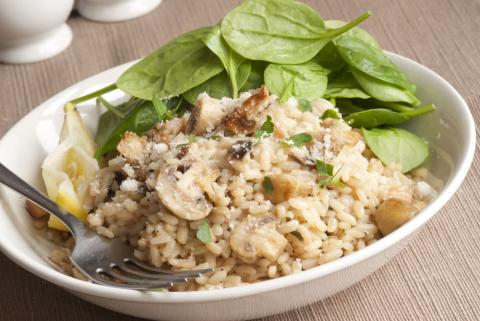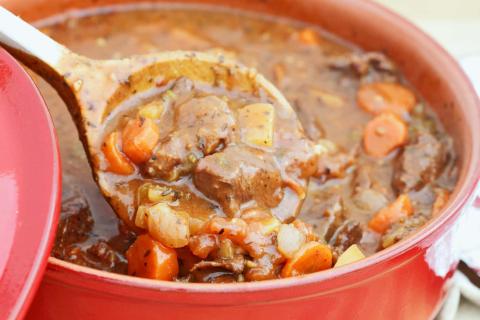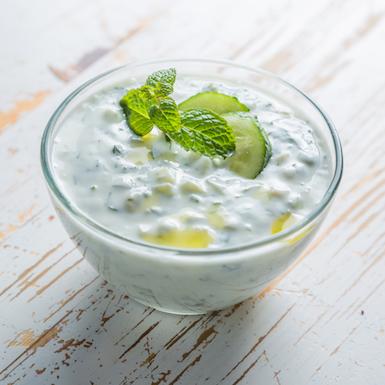- 2 medium sized (300g) Onions
- 20 medium sized (300g) Mushrooms
- 2 (6g) Garlic Cloves
- 3 Tablespoons (30g) Vegetable Oil
- ½ Pack (250g) Risotto Rice
- 2 Pints (1L) Water
- 1 Pinch (1g) Ground Black Pepper
- 1 Tub (100g) Low Fat Plain Yoghurt
- 2 Teaspoons (2g) Dried Parsley
- 1 (7g) Reduced Salt Stock Cube (Vegetable Or fish)
- 2 (200g) Haddock Fillets
- 2 (200g) Smoked Haddock Fillets
Ingredients
Allergy Disclaimer
Always check the label of each ingredient for allergy warnings.
Method
- Wash both types of fish with cold running water, pat dry with a paper towel and cut into small pieces (1cm X 1cm).
- Peel the onions and garlic then wipe and slice mushrooms, dice the onions and crush the garlic with the back of a knife.
- Heat the oil in a large pan then add the onion, garlic and mushrooms and allow them to cook gently without colour for a few minutes.
- Add the risotto rice to the pan and stir into the rest of the ingredients allowing the rice to be coated with the oil, again for a few minutes.
- Dissolve the stock cube in boiling water and gradually add it to the pan, allowing the rice to absorb the liquid between additions of more.
- For the last 5-10 minutes of the rice cooking, add the cut fish to the pan and stir in. Now add the yoghurt, parsley and pepper and finish cooking.
- The dish is ready to serve once the rice is cooked and the stock has been absorbed. Additional water may need to be added if the stock has been absorbed before the rice is cooked.
Cost Saver Tips
Look for offers on white fish- it doesn't have to be haddock. Frozen fish will be cheaper than fresh.
Tips for Kids
Take them to the fresh fish counter so they can buy their fish for the risotto
Nutritional Information
Based on a single serving of 538g (% of an adult's reference intake)
Energy
441 kcals ( 22 %)
1,851 kJ ( 22 %)
Fat
1.6 g ( 8 %)
Saturates
64.6 g ( %)
Sugar
5.9 g ( 7 %)
Salt
1.1 g ( 18 %)
Detailed nutritional information
| Per 100g | Per 538g serving | |
|---|---|---|
| Energy Kcals | 82 | 441 |
| Energy Kj | 344 | 1,851 |
| Protein | 4.6 g | 24.7 g |
| Total Fat | g | g |
| Saturated Fat | 0.3 g | 1.6 g |
| Carbohydrates | 12 g | 64.6 g |
| Total Sugars | 1.1 g | 5.9 g |
| NSP Fibre | 0.4 g | 2.2 g |
| Sodium | 78 mg | 420 mg |
| Salt | 0.2 g | 1.1 g |
Find out about nutritional labelling
Nutrition labels on the front of packaging
- Most of the big supermarkets and many food manufacturers display nutritional information on the front of pre-packed food.
- Front of pack nutrition labels provide information on the number of grams of fat, saturated fat, sugars and salt and the amount of energy (in kJ and kcal) in a serving or portion of a recipe.
- The labels also include information about reference intakes (expressed as a percentage) which are guidelines about the approximate amount of particular nutrients and energy required for a healthy diet.
- The colour coding tells you at a glance if the food has high (red), medium (amber) or low (green) amounts of fat, saturated fat, sugars and salt.
- The more greens on the label, the healthier the choice
- Amber means neither high nor low, so you can eat foods with all or mostly ambers on the label most of the time.
- Reds on the label means the food is high in that nutrient and these are the foods we should cut down on. Try to eat these foods less often and in small amounts.
Food shopping tips
If you’re trying to decide which product to choose, check to see if there's a nutrition label on the front of the pack. This will help you to quickly assess how your choices stack up. You will often find a mixture of red, amber and green colour coding for the nutrients. So when you're choosing between similar products, try to go for more greens and ambers and fewer reds if you want to make a healthier choice.
 Activities & Play
Activities & Play Behaviour
Behaviour Childcare
Childcare Development & Growing Up
Development & Growing Up Family, Friends & Relationships
Family, Friends & Relationships Feeding Your Baby
Feeding Your Baby Food & Eating
Food & Eating Health & Safety
Health & Safety Mental Health & Wellbeing
Mental Health & Wellbeing Money & Work
Money & Work Online Behaviour & Safety
Online Behaviour & Safety Pregnancy & First Days
Pregnancy & First Days School & Education
School & Education Sleep
Sleep

